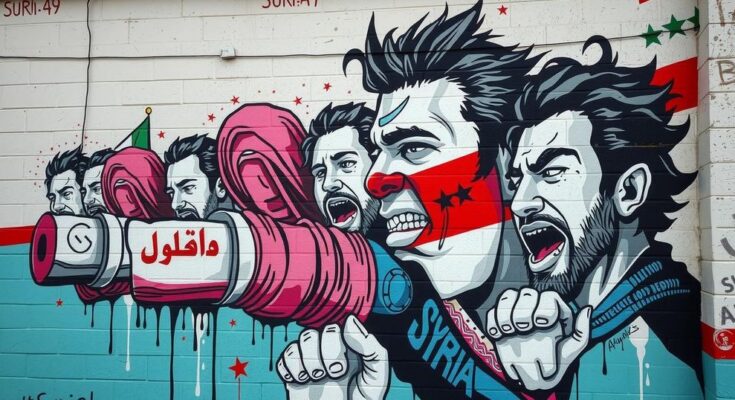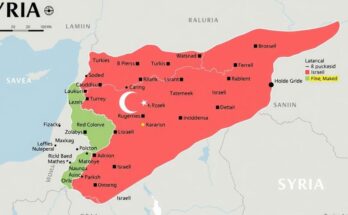A teenager’s graffiti in 2011 sparked the Syrian revolution, leading to widespread protests against Bashar al-Assad’s regime. What began as a simple act of rebellion turned into a violent civil war with devastating humanitarian outcomes, as over half a million Syrians lost their lives and millions were displaced. The current situation hints at a shift in power dynamics, with Assad reportedly fleeing to Russia.
The story of how a teenager’s simple act of graffiti ignited the Syrian revolution is a poignant reminder of the potential power of youth against oppressive regimes. In 2011, 14-year-old Mouawiya Syasneh scrawled the phrase “It’s your turn, Doctor” on a wall in Daraa, signaling a rebellious challenge to President Bashar al-Assad. This act of defiance was met with severe reprisals; the regime arrested and tortured Mouawiya and his friends, inciting outrage among the community.
The regime’s violent response sparked widespread protests across Syria, known as the Day of Rage, that echoed the Arab Spring movements in Tunisia and Egypt. As protests grew, Assad’s forces escalated their violence, leading to an uprising that transitioned from peaceful demonstrations to armed conflict. By July 2011, defectors formed the Free Syrian Army in opposition to the Assad regime.
The ongoing conflict has resulted in catastrophic humanitarian consequences, with over half a million lives lost and millions displaced. Rebel forces have since gained traction, culminating in reports of Assad fleeing to Russia, marking a significant shift in the power dynamics of the conflict. From a single act of rebellion to a nation engulfed in turmoil, Syria’s current reality underscores the dire effects of oppression and the resilience of its people.
The Syrian revolution, which commenced in 2011, was rooted in deep-seated frustrations against President Bashar al-Assad’s authoritarian rule. Initially sparked by the graffiti of a teenager, the unrest mirrored broader regional movements advocating for democratic reforms and civil liberties. The insidious nature of the regime, characterized by severe punitive measures against dissent, provoked a significant response from the populace, leading to widespread protests that rapidly escalated into a lengthy and violent civil war. The conflict resulted in extreme social and humanitarian crises, permanently altering the landscape of the nation.
In conclusion, the uprising in Syria, ignited by a teenager’s graffiti, vividly illustrates the intersection of youthful defiance and the harsh reality of authoritarianism. The repercussions have been devastating, leading to immense human suffering and displacement. As we observe the current state of Syria, where the regime’s hold is increasingly tenuous, the future remains uncertain. The journey from innocence to conflict emphasizes the urgent need for resolution and reformation within this strife-torn nation.
Original Source: www.indiatoday.in




